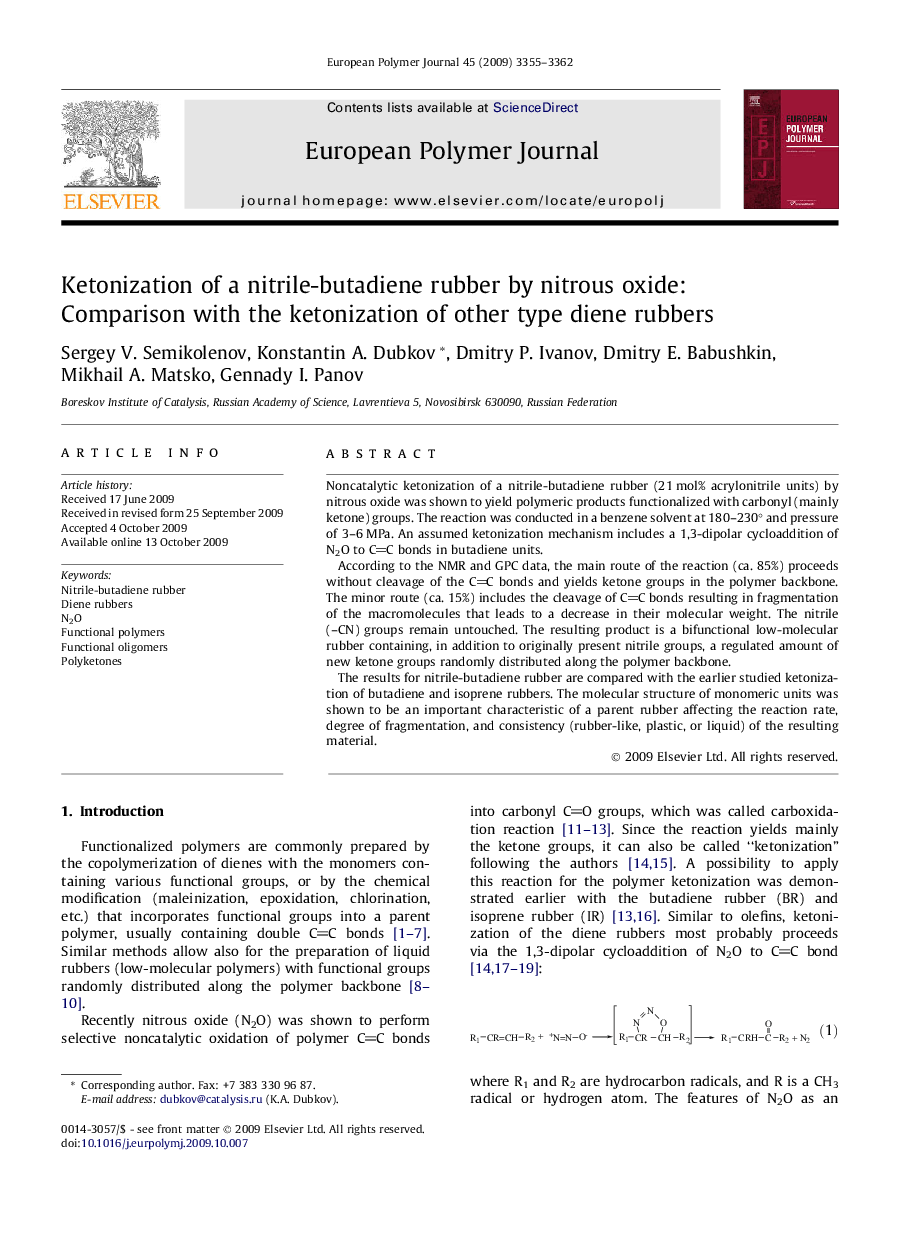| کد مقاله | کد نشریه | سال انتشار | مقاله انگلیسی | نسخه تمام متن |
|---|---|---|---|---|
| 1396221 | 984168 | 2009 | 8 صفحه PDF | دانلود رایگان |

Noncatalytic ketonization of a nitrile-butadiene rubber (21 mol% acrylonitrile units) by nitrous oxide was shown to yield polymeric products functionalized with carbonyl (mainly ketone) groups. The reaction was conducted in a benzene solvent at 180–230° and pressure of 3–6 MPa. An assumed ketonization mechanism includes a 1,3-dipolar cycloaddition of N2O to CC bonds in butadiene units.According to the NMR and GPC data, the main route of the reaction (ca. 85%) proceeds without cleavage of the CC bonds and yields ketone groups in the polymer backbone. The minor route (ca. 15%) includes the cleavage of CC bonds resulting in fragmentation of the macromolecules that leads to a decrease in their molecular weight. The nitrile (–CN) groups remain untouched. The resulting product is a bifunctional low-molecular rubber containing, in addition to originally present nitrile groups, a regulated amount of new ketone groups randomly distributed along the polymer backbone.The results for nitrile-butadiene rubber are compared with the earlier studied ketonization of butadiene and isoprene rubbers. The molecular structure of monomeric units was shown to be an important characteristic of a parent rubber affecting the reaction rate, degree of fragmentation, and consistency (rubber-like, plastic, or liquid) of the resulting material.
Figure optionsDownload as PowerPoint slide
Journal: European Polymer Journal - Volume 45, Issue 12, December 2009, Pages 3355–3362